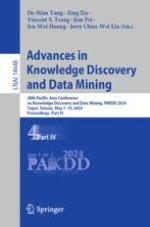2024 | OriginalPaper | Chapter
Weighted Chaos Game Representation for Molecular Sequence Classification
Authors : Taslim Murad, Sarwan Ali, Murray Patterson
Published in: Advances in Knowledge Discovery and Data Mining
Publisher: Springer Nature Singapore
Activate our intelligent search to find suitable subject content or patents.
Select sections of text to find matching patents with Artificial Intelligence. powered by
Select sections of text to find additional relevant content using AI-assisted search. powered by
